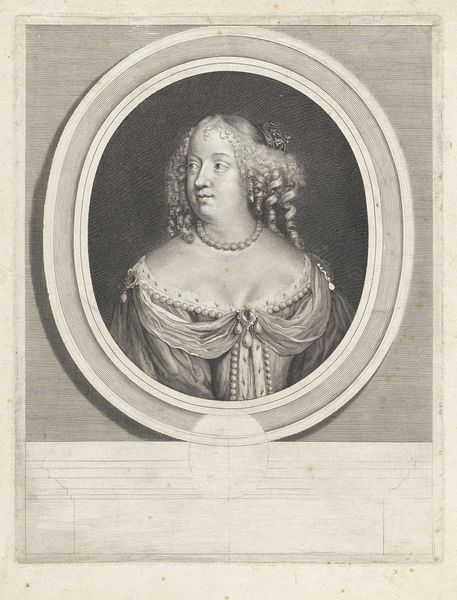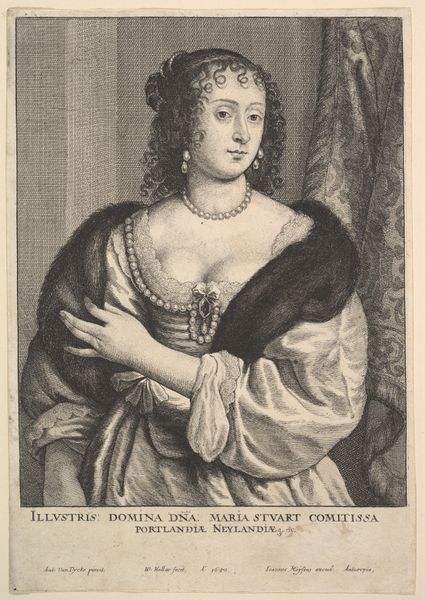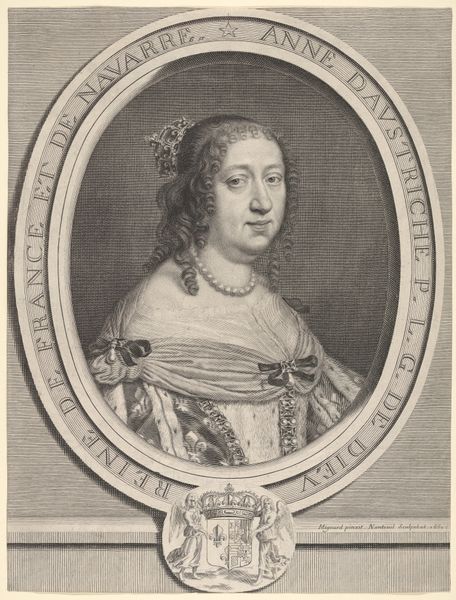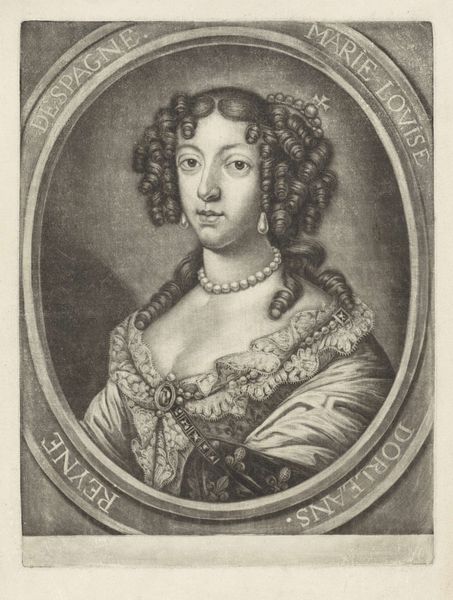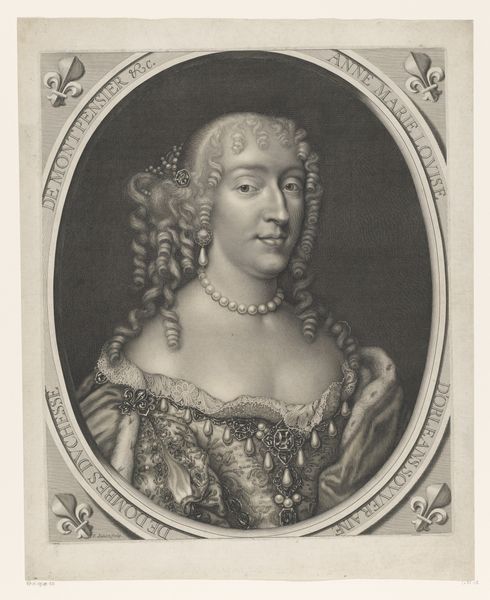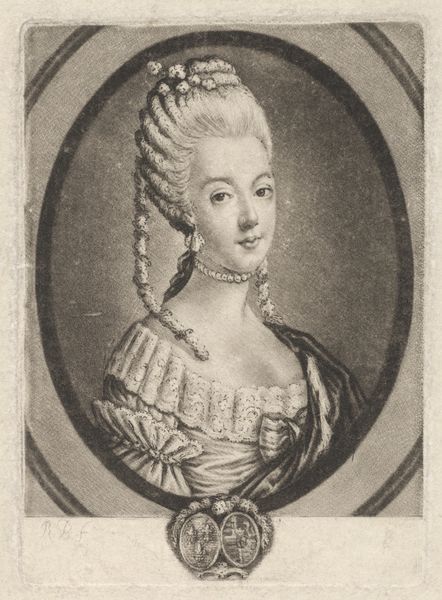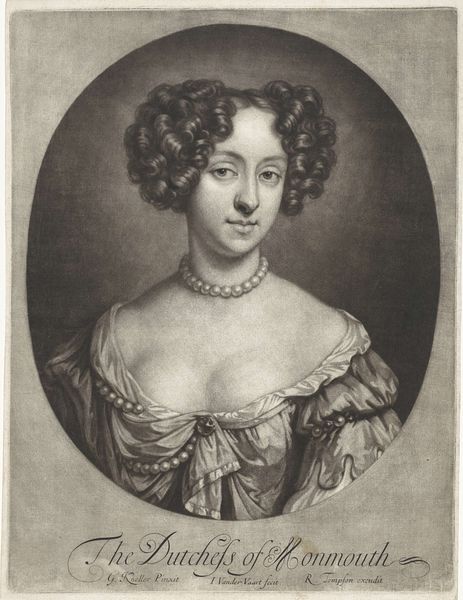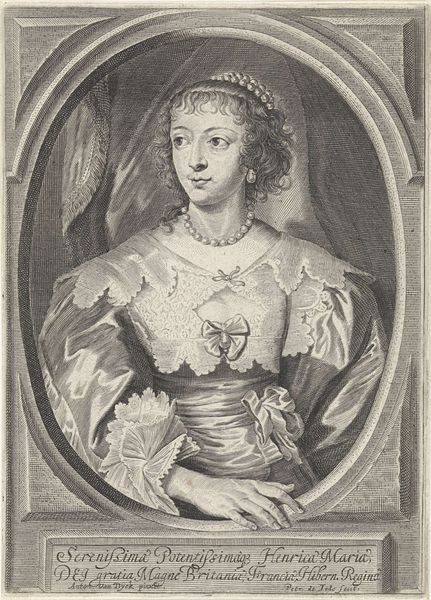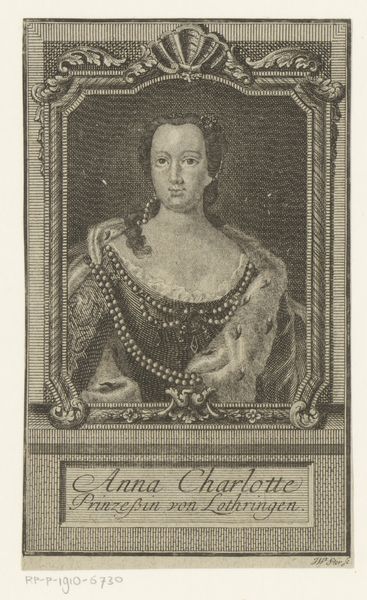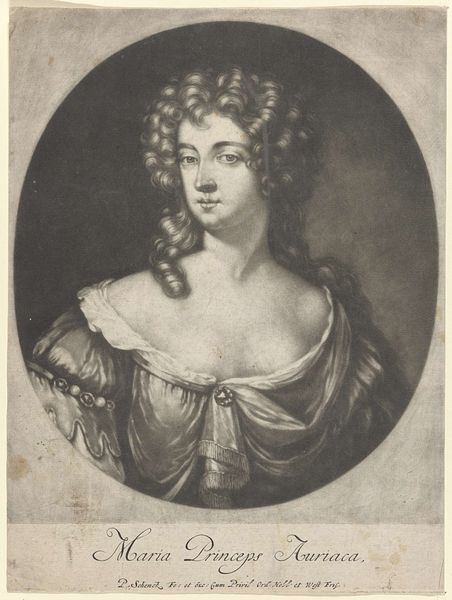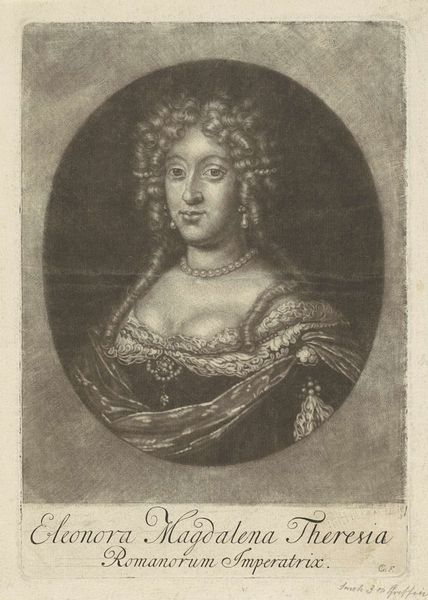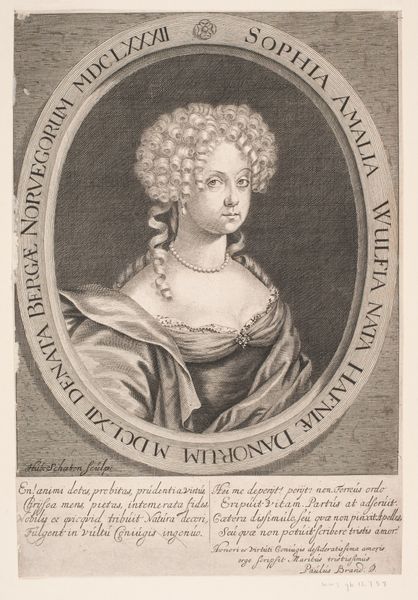
print, engraving
#
baroque
# print
#
history-painting
#
engraving
Dimensions: 533 mm (height) x 423 mm (width) (bladmaal)
Editor: Here we have an engraving from the 1670s by Hubert Schaten, entitled *Dronning Charlotte Amalie.* It’s quite detailed, even though it’s just a print. What strikes me most is how the ornamentation and the portrait style must have worked together to project an image of power and grace. How do you interpret this work, especially considering its historical context? Curator: Considering its public role, this engraving served as a form of political currency. Prints like these were often disseminated widely, constructing and reinforcing the image of the monarchy. Note how Charlotte Amalie is framed – literally – by her titles and the oval border. The print emphasizes her role, more than individual character. Editor: That’s interesting. So, the likeness is secondary to the message of the monarchy itself? Curator: Precisely. While likely based on a painting, this print aims for broader distribution, thus amplifying the Crown's reach. Consider, also, the function of her lavish dress and jewelry. Are these elements simply decorative, or do they serve a larger purpose? Editor: I suppose the finery broadcasts wealth and power. A symbol of the strength of the kingdom. But does the dissemination of images such as this create, or reflect that power? Curator: An insightful question. Images have performative power. They don't just reflect reality but actively shape and reinforce it. Prints like this are both a reflection and an active participant in the political landscape of the time. Editor: So it's less about a specific person, and more about projecting an ideal of royalty. I guess I never really thought about prints having that kind of power! Curator: Indeed. It speaks to the pervasive influence of art in shaping public perception and reinforcing socio-political structures.
Comments
No comments
Be the first to comment and join the conversation on the ultimate creative platform.
